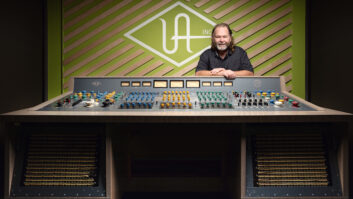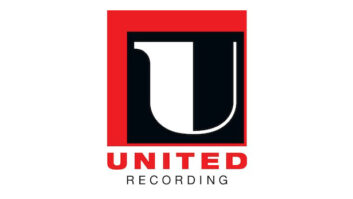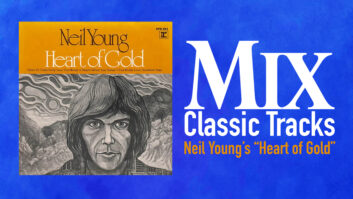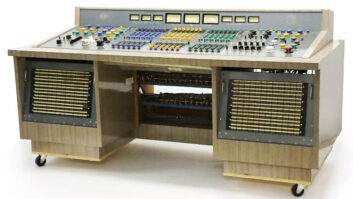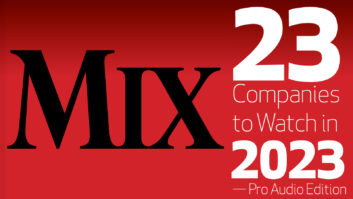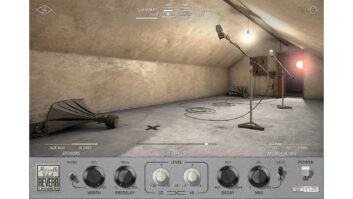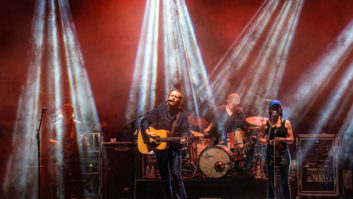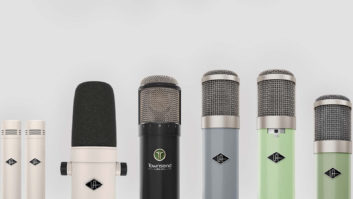
Like a lot of American cities at the dawn of the 1950s, Chicago was
ready to swing. A young entrepreneur named Hugh Hefner thrust his
ambition upon the marketplace with a new magazine called
Playboy. Saul Bellow and Nelson Algren were re-inventing the
great American novel, Chi-style. Machine politics were making the leap
from science to art, courtesy of the first Mayor Daley. Under the baton
of Fritz Reiner, the Chicago Symphony played classical music with more
cojones than had ever been heard. Blues recordings were
undergoing a similar makeover at Leonard Chess’ indie label, thanks to
the thousands of African Americans who migrated from the Delta to the
stockyards, slaughterhouses and steel mills of the South Side. The
University of Chicago showed higher education that economics and
sociology could be processed in an entirely new manner. Bauhaus
architecture thrived, and an experimental form of group comedy was
emerging, based wholly upon improvisation. Sam Giancanna and his mob
were becoming the most powerful crew in the country. And the Cubs still
sucked. Bill Putnam wanted in.
So many forces in play: the rise
of the hi-fi consumer (the sort of man who read Mr. Hefner’s mag); the
emergence of the indie label (most notably Chess and Vee-Jay); the
increase in sales and stature for Chicago-based Mercury Records; the
networking with industry A&R men and producers; the recruitment of
key technical personnel, such as Emery Cook and Jim Cunningham; and the
increased exposure to a variety of recording scenarios. All of this
meant explosive growth for Putnam, Universal Recording and United
Audio.

“People forget, Chicago became the place to record in the
’50s,” says New Yorker Phil Ramone. “All of these labels,
like Vee-Jay and Mercury [and Chess], started coming around.”
By the end of the ’40s, Putnam had outgrown his tenure at the Civic
Opera House, scene of his mega-smash “Peg o’ My Heart.”
With the proceeds from this 1,500,000-selling single on Putnam’s own
Universal Records, a change in venues was inevitable. Putnam looked to
the east — if only a few blocks — to the Magnificent Mile
of Michigan Avenue, where there were more clubs, more action. He
scouted a building on Ontario Street, a bustling thoroughfare on the
near North Side.
He was juggling like a madman. Producer, lyricist, label owner,
engineer, studio owner and technical designer were all titles to which
he answered. It was at the Ontario Street space, and with the help of
Cunningham and Cook, where Putnam began to make serious breakthroughs
in isolation, mastering and reverberation. He built two rooms here, A
(25×40×15 feet) and B (15×20×12 feet), along with
two mastering rooms: one stocked with Scully lathe and Grampion heads,
the other a “home-brew,” belt-driven turntable with Olsen
feedback cutting heads.
This studio, in operation from roughly 1950 to 1955, was a pivotal
juncture in Putnam’s career. As a result of meeting Decca Records
A&R man Tutti Camaratta (himself a studio recording legend who went
on to own and operate Sunset Sound in Los Angeles), he began producing
“hillbilly” acts; London-based Decca badly wanted C&W
acts, so Putnam recorded Hank Williams, and also wrote for and produced
more artists for Decca. Yet, he never strayed far from his first
musical love, jazz: Stan Kenton, who likewise stretched the boundaries
of his profession, became the first jewel in a crown of royalty that
started to flood Universal.
When Kenton and his progressive, wailing band came in to record in
1951, the two hit it off immediately. “We had gone in to record
with Bill, and Bill had everything set up,” recalls Murray Allen,
then a member of Kenton’s band and the man who would one day own
Universal Recording. “Kenton called in to Bill, ‘Bill,
how’s everything in there?’ and Bill replied, ‘Everything’s
perfect until the music starts.’”
Thus began an association that would last until Kenton’s death.
These two mavericks were perfectly suited for each other. For these
sessions, Putnam wanted the sound to be as fresh and bold as Kenton’s
arrangements. So he began to address several aspects that would have
profound effects on how records sound.
Putnam devised a band shell for strings that was a mainstay for
almost two decades. In addition, he built a drum shed for the isolation
of drums to be used for the Kenton recordings. He conducted the first
8-track experiments, which featured a staggered head with a
signal-to-noise ratio of 30 dB. But most significantly, perhaps, was
the creation of another “home brew”: a custom console,
complete with rotary faders, 12 inputs, preamps and dedicated echo
sends.
“Bill Putnam was the father of modern recording as we know it
today,” says Bruce Swedien. “The processes and designs that
we take for granted — the design of modern recording desks, the
way components are laid out and the way they function, cue sends, echo
returns, multitrack switching — they all originated in Bill’s
imagination. That’s pretty serious.” The home-brew console was
the precursor to the vaunted Universal 610 console, which is the
precursor to whatever console you are using right now.
As mentioned in Part One, Emory Cook was a fellow pioneer who joined
forces to make Universal the premier mastering house in the country. In
the early ’50s, folks such as Cosimo Matassa in New Orleans and Sam
Phillips in Memphis shipped their tracks up to Chicago to have the
hottest masters cut. In fact, due to the innovations with half-speed
mastering that Putnam and Cook were employing (another first), Mercury
contracted Putnam to master their remarkable Living Presence
hi-fi recordings, featuring, most notably, some of the early stereo
recordings to capture the powerful Chicago Symphony Orchestra as
recorded by Lewis Layton.
The floodgates opened, and Putnam was thriving as the owner of the
country’s hottest facility. Universal’s growth was made possible by the
confluence of these factors: the road bands of Basie, Kenton and the
like; and the home-grown labels such as Mercury and the nascent
R&B/blues scene that was emerging on the strip known as
“Record Row” on south Michigan Avenue, home of Chess and
Vee-Jay. From these two labels, Putnam recorded the urban funk of
Little Walter, Willie Dixon, Jimmy Reed and Muddy Waters, as well as
the flash-in-the-pan “rock ‘n’ roll” thing with Chuck Berry
and Bo Diddley. This was in addition to recording Hank Williams for
Decca and Spike Jones for Liberty. “We were on a roll” was
how Putnam put it years later. “With the extraordinary growth of
Ontario Street, I decided to build my dream room.”
THE DREAM STUDIO
The ’50s were a fertile era in the development of studio
construction. Many of the most storied American studios were built at
this time: Capitol Tower; Chess; Rudy Van Gelder’s studio in Englewood
Cliffs, N.J.; Sun in Memphis; and Criteria in Miami.
Universal Recording, at 46 East Walton, may well be the most
mythical studio of them all. Swedien, who was hired by Putnam to work
the “B” room, has never been able to contain his enthusiasm
for that particular space. “This was a magnificent room,”
he says. “The dimensions of the ‘A’ room were 80 feet
by 60 feet, with 30-foot-high ceilings. Floating floors, built on cork,
suspended walls, variable acoustics with rotating panels. One of the
best-sounding rooms in the world.”
By 1955, the move to 46 East Walton was complete, and the studios
were thrumming with jazz, swing, pop and R&B. Top producers from
Mitch Miller to Quincy Jones were lining up to work with him at
Universal. However, far from being too busy or too cool, Putnam was
warm and inclusive. An example of his nature comes again from Swedien,
who, after learning that Putnam created “Peg o’ My Heart,”
would not stop bugging his parents with, “Bill Putnam
this, Bill Putnam that.” On a business trip from
Minnesota, Swedien’s parents decided to look up this Putnam fellow.
Such was the openness of the man — the hottest
producer/designer/engineer in America — that in the middle of a
Patti Page session, he welcomed the young Swede’s parents —
strangers-off-of-the-street and into the control room as if they were
old friends. They were sold; their boy could come down and work
here.
Revenues were up 30% to 40% each year. Universal’s staff was
expanding. Again, in addition to the massive “A,” the
“B” rooms were cutting-edge mastering rooms, as well as
state-of-the-art echo chambers. “Everything at Universal was
first-rate, state-of-the-art, from the equipment to the staff,”
says the “Iceman” Jerry Butler, who would record one of the
very first “soul” records ever, For Your Precious
Love, with Putnam at Universal.
One artist who had enjoyed the room — and its designer —
was the immortal Duke Ellington, the greatest composer/arranger in
American music history. Putnam, who recorded a total of 250 tracks for
him, described a session with Duke as, “like the last act of a
Russian opera. It was no doubt the most organized musical chaos that
you ever heard until all of the pieces got glued together. It then
became musical ecstasy. To be around this great man was its own
reward.”
So this was Putnam’s world in the mid-’50s: Mahalia Jackson to Hank
Williams, Spike Jones to Bo Diddley. Erasing and re-penciling the
boundaries of acoustic design, console design, isolation, mastering and
miking. Still, he was not the first, nor would he be the last, engineer
to put things such as home and health on the back burner. Smoking,
drinking and long hours were exacting a toll. Putnam’s marriage was not
in good shape. But now he heard new whispers: “Come out to Los
Angeles, the Mecca of recording. You’ll mop up.”
“Things were really moving along: Many of our clients, who
were owners of record labels, urged me to start a studio in
Hollywood,” recalled Putnam in the early ’80s. “I had to
make a decision whether to remain the ‘big frog in the small
pond’ or take the giant step. This meant I would be going head to
head against the legendary Radio Recorders, who were the giants of the
independent recording studios. I was about to take a step to find out
where I really stood in the pecking order.”
So, after an unprecedented 10-year run in Chicago, Putnam sold his
interest in Universal in 1957. He handed the baton and his Rolodex of
clients to his protégé, Swedien, in a manner that was
characteristic: “Bill had worked this out beforehand,” says
Swedien. “He told me to sit at the console and record Kenton’s
band while he stood in the back of the control room and smoked. He told
me that he was going to the john and left me alone in the control room.
The next time I saw him was five years later in Los Angeles.”
Universal in Chicago would be a force for a decade to follow, with
Swedien recording a slew of hits such as “Big Girls Don’t
Cry” by the Four Seasons, “Duke of Earl” by Gene
Chandler, “It’s in His Kiss” by Betty Everett and
“Higher and Higher” by Jackie Wilson, not to mention the
incredible Chicago soul records of Curtis Mayfield & The
Impressions.
L.A., UNITED AND THE RAT PACK
It was 1958. Putnam, who worked regularly with Basie and Ellington,
was doing a session for a couple of kids. “I was 18 at the
time,” says Butler. “Curtis [Mayfield] was only 15. We came
in with a song that Curtis had written called ‘For Your Precious
Love.’ Because of some contractual obligations, it was decided
that union musicians were gonna play on the track. Well, we ran the
song down to show the musicians, and Putnam turns to Curtis, who had
been playing the guitar, and says, ‘That’s the heart and soul of
your song right there in that guitar.’ So right there, Curtis’
guitar became the glue. Putnam spotted that.”
1958. Putnam begins construction on the former Douglas Fairbanks
soundstage at 6050 Sunset Blvd. He’d brought along Curt Esser, the
architect behind his innovative Universal studio in Chicago, to go one
better in Hollywood. Together, and with the assistance of another
Chi-cronie, Jim Cunningham, United became this massive space in which
Studios A (60,000 cubic feet) and B (approximately 35,000 cubic feet)
share a roof with a 3,000-cubic-foot stereo echo chamber, maybe the
best-sounding stereo chamber ever in an American studio. This 15,0000
square feet of audio Valhalla — comprising three studios, a
mixdown room, three mastering rooms and a manufacturing plant —
would bring together the best of the West Coast engineers, and a team
of managers and designers to topple the once dominant Radio Recorders.
But Putnam wasn’t finished. By 1960, he acquired the former Radio
Center Theater, at 6000 Sunset, to form Western Recorders. As with
United, there were two large rooms, Studio 1 (approximately 65,000
cubic feet) and the slightly smaller Studio 2. “Studio 3 was made
from what was left over,” Putnam would recall with a touch of
irony. “As fate would have it, this was the studio that became
legendary, to the extent that this room would be copied by Wally Heider
[he even named it Studio 3, which was very flattering] in the ’70s, as
well as two other studios in the U.S. and Canada, each publicizing that
it was a replica of the famous Studio 3 in Hollywood.” Although
many of the classic ’60s groups such as The Turtles, The Mamas &
The Papas, The Lettermen, The Association, Johnny Rivers, Glen Campbell
and Jan & Dean made stellar tracks there, it’s the timeless work of
engineer Chuck Britz and auteur Brian Wilson (in particular, one of the
most revered pop albums in history, Pet Sounds) that give the room its
tiny shrine-like aura.
As the ’60s began, Putnam became an unofficial member of the Rat
Pack. Legendary arranger Nelson Riddle made an introduction that would
completely transform Putnam’s world. In 1960, Frank Sinatra was
arguably the most powerful man in show business. At first meeting,
Sinatra instinctively sussed that Putnam wasn’t merely a techie, but a
fellow leader, a fellow swinger, becoming the only
“technician” Sinatra ever became true pals with.
Coincidentally, Sinatra’s contract was up with Capitol. He started his
own label, Reprise, which would record all of its seminal tracks at
United’s A and Western’s 1 rooms, including monster hits like “It
Was a Very Good Year” and “Strangers in the Night.”
United’s kingdom housed the Reprise offices for Putnam’s new buddy; in
fact, Sinatra, who epitomized the evolution and excellence of modern
recording like no one else, soon depended on Putnam to do all of his
sessions, becoming pissy if Putnam was busy with another artist. So he
put Putnam on retainer to handle virtually all of his sessions from
1960 to 1964. More importantly, the chairman of the board introduced
him to his assistant, Miriam, or “Tookie,” as she was known
by friends.
Putnam, who had been recently divorced from his first wife, was
suddenly in sync on every level of his new West Coast life.
Demonstrating how a recording facility could be built and run, he’d
gone head-to-head with Radio Recorders, the biggest independent studio
in Los Angeles, and won. He finally found a woman who “understood
what my business was about and what I was about.” (They married
and produced two children, Bill Jr. and Jim, both of whom would
continue the Universal brand to the present day.) And, he was making
cool records. Examples of Putnam and Sinatra collaborations at
United/Western include Sinatra: Basie and Sinatra &
Strings. They’re textbooks on how strings, horns, brass, rhythm and
vocal should be laid down.
As good as those early ’60s tracks with Francis Albert are, Putnam’s
most iconic recording from the post-Chicago days was with another
maverick on par with Sinatra, Kenton or Basie: Ray Charles. Brother
Ray, who, like Sinatra, had left his longtime label (Atlantic) for ABC
(Impulse), was itching to do something new. Modern Sounds in Country
and Western Music, Vol. 1 was new. Cross-pollinating country with
the blues, Rays’ mournfully jazzy “I Can’t Stop Loving You”
skyrocketed to Number One on Billboard‘s Top 100. With Sid
Feller overseeing proceedings and Putnam perched behind his newly
minted Universal 610 console, the LP was not only a commercial smash,
but it also garnered the “Record of the Year” Grammy.
Putman, now the king of Hollywood’s recorders, snagged a “Best
Engineered Song” Grammy nomination for the ring-a-ding-ding year
of 1962. It lost out, alas, to another genre-bending act: The
Chipmunks.
These were the good years: UREI and Reprise upstairs, humming along;
Nat, Bing, Dino, Frank and Ray in United (now Ocean Way), while the
newer breed of hit-makers, like the Beach Boys and The Mamas & The
Papas, were locked into Western 1, 2 or 3 (now Cello); and the finest
engineering staff ever assembled with Bones Howe (the Fifth Dimension),
Lee Herschberg (Sinatra), Heider (Crosby, Stills and Nash), Chuck Britz
(the Beach Boys) and the young Allen Sides; the sweetest echo chambers
on the planet, so deigned by Brian Wilson, cunningly crafted by Putnam
and Jim Cunningham; and, rooms so acoustically marvelous, that they
have gone virtually untouched by the present owners some 40 years
later.
“To show you how shrewd he was,” adds Ramone, who
renovated his own classic studio, New York’s A&R studios in the
’60s and ’70s, “if you put your hand on the walls at United
Western, you could tell it was not very expensive material. But,
obviously, it got the job done.”
Talk about shrewd. In the early ’60s, stereo was roughly at the same
evolutionary spot where 5.1 is today. Label owners finally got hip to
marketing and releasing stereo product, except that they had none. Or
did they? Like Swedien, Ramone and Tom Dowd, Putnam had surreptitiously
been running simultaneous stereo mixes along with the expected mono
masters for a couple of years. When the labels got wind of this, they
offered to pay for the tape. No dice, said Putnam. “However, I
will let you pay me for the studio time.”
During the late ’70s and into the early ’80s, Putnam slowed down,
due somewhat to ill health, but also to the changing nature of the
business. He explained, “Making records in the 2- or 3-track era
was a heck of a lot of fun. In those days, when you walked out of the
control room after a date, what you heard was what you got!”
As the recording environment evolved, no one stuck his finger into
the air and forecast the winds of change more ably than M.T. Putnam.
“When the independent producer became prominent…the old
guard saw its demise. Then came the artist/producer-owned studio-style
operation and the evolution of new technology, which brought the
‘whiz kids’ out of the woodwork, not just in Hollywood, but
everywhere in the world. It became more and more difficult to compete
in a fragmented market.”
One of those whiz kids who carries the torch is George Massenburg,
who tells of the time when he met with Putnam during this era of
transition. “I had this console design that I went to show him.
He was intrigued. He looked at the specs and said that he loved the
design. Now, here is how he saw things: not, ‘how long will this
board take to amortize’ or any of that stuff. Just ‘how
good does it sound, how well does it work?’”
In his twilight years, Putnam enjoyed the roles of mentor and elder
statesman, appearing at a SPARS, NARAS or AES function. He’d had a
pretty cool run: almost single handedly brought a bastard industry into
its own realm; recorded the zenith of American music icons; and adored
by literal and figurative offspring. Yet, it was always —
always — about music.
BONUS TRACK
“My dad took me to a Kenton memorial concert at the Hollywood
Bowl,” says his namesake, Bill Jr., who now heads Universal
Audio. “All of the old guys showed up.” When Bill Putnam,
who just about cut his teeth on Kenton’s music — before
Hollywood, before Sinatra and all the money — heard the band’s
theme song, “Artistry in Rhythm,” he broke down and
cried.
During the course of this article, we spoke to many recording
heroes. Each was asked what Putnam’s legacy might be to today’s mixers
and engineers. The answers were often vague, probably because they
hadn’t time to think of a proper reply. So, here is what the man’s
legacy is: If you are involved with the bass line, and its
player, and its sound, and its relation to the
song, more than how it is being processed by Bill Putnam’s 1176
limiter, its creator would probably nod approvingly. And shake out a
new smoke.
Putnam’s Technology Legacy
Jim Cogan is the co-author of Temples of Sound (Chronicle
Books, 2003). He is also an engineer/producer and educator.

It’s ironic. Bill Putnam, who recorded the bedrock of the American
soundtrack, the guy who brought recording into its own realm, is
probably best known for limiters and mic pre’s.
In 1958, while United Recorders (now Ocean Way) was just coming into
shape from its previous incarnation as a soundstage, Putnam moved the
fledgling Universal Audio operation upstairs to 6050 Sunset Blvd. Here,
assembled by hand, Universal Audio produced the 100 D Preamp, the 101A
Line Amp and the 50BA Equalizer, along with the legendary 610 Universal
consoles. Through an acquisition of a company called Studio Electronics
Corp. came the patent rights for the LA-2A, the LA-3A and then the
LA-4A tube limiters. Universal morphed into UREI and, yes, expanded its
operation. He acquired Teletronix and in his “spare time”
worked on the development of gear that would be as ubiquitous as a
Shure 57 in studios around the country and around the world: the 1176
FET limiter and the series of large monitors, such as the UREI 811s and
813s. These were the standard for large-scale studios from the late
’60s to the ’80s, as common as the NS-10s are today for near-field
monitors. In addition to these warhorses, UREI also introduced the 1108
FET Preamp and some innovations — such as the Cooper Time Cube
and the Electrostatic Reverberator — that are best known
for…well, actually, they are best not known.
The irony crystallizes in a prediction Putnam made in 1983, just as
the digital age was coming into being. “The compact disc is an
important and vital development that can revive the industry the way
stereo did in the late ’50s. It means that the hardware market for
professional studio gear will be revitalized. Existing analog studio
equipment will not be acceptable, and its life expectancy therefore has
been reduced dramatically.” He would probably have a good
laugh were he alive to witness the grease pencil marks on the myriad
1176s and LA-2As in control rooms at this moment.
Today, with a range of gear that includes plug-ins for the digital
domain, Universal is a brand that represents history and family. Two
sons, Bill Jr. and Jim, now run a company that their pop started in
Evanston, Ill., in the late ‘40s with a simple premise: to solve
problems in the recording studio.’
— Jim Cogan

In his own words: Click here to learn more on Bill Putnam,
from an interview in Mix magazine, August 1983.
